easy plane to 3d draw
The March 2022 Fusion 360 update brought several enhancements to 3D Sketching. Make sure yous have version 2.0.7805 or newer.
Before the update, 3D Sketches were cumbersome and difficult to handle. Creating 3D sketches required the use of the Move command. It proved to exist a boring and confusing process, unlike 3D Sketching from competitors, such equally Solidworks.
- Sketch Commands Supported past 3D Sketch
- Sketch Constraints Supported by 3D Sketch
- Differences Between 2nd and 3D Sketching
- When to Utilise 3D Sketches
- Create a 3D Sketch in Fusion 360
- Practise a 3D Sketch – Sweep a Side Table
Sketch Commands Supported by 3D Sketch
This Fusion 360 update brings new 3D sketching behavior to the following sketch features:
- Line
- Rectangle tools
- Point
- Spline tools
- Circle tools
- Conic Curve
- Ellipse
- Polygon
Sketch Constraints Supported by 3D Sketch
3D Sketches also support the use of the following sketch constraints:
- Horizontal/Vertical
- Ancillary
- Tangent
- Equal
- Parallel
- Perpendicular
- Fix/Unfix
- Midpoint
- Concentric
- Colinear
- Curvature
With these enhancements, you at present immediately come across origin axes, planes, and rotational manipulators to help create your 3D sketch.
Moving from one sketch aeroplane to some other is as easy as moving your mouse cursor in the direction you want to sketch. Guidelines then appear to help you sympathise where the sketch is going to be in 3D infinite.
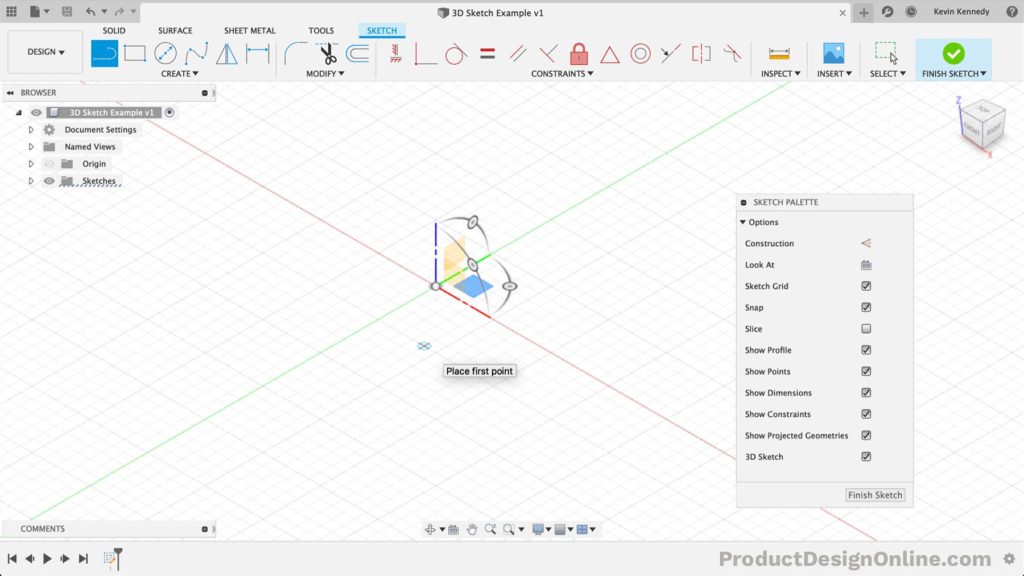
Differences Between 2d and 3D Sketching
In a 2nd Sketch, we constrain sketch geometry to the plane used to create the sketch. You can create a new 2D sketch on each of the following:
- XY, YZ, or XZ origin planes
- Faces
- Structure planes
A 2d sketch plane can originate anywhere in 3D space. However, the selected plane restricts sketch geometry to that plane.
With a 3D sketch, Fusion 360 removes the planar restriction allowing you to create sketch geometry anywhere in 3D space.
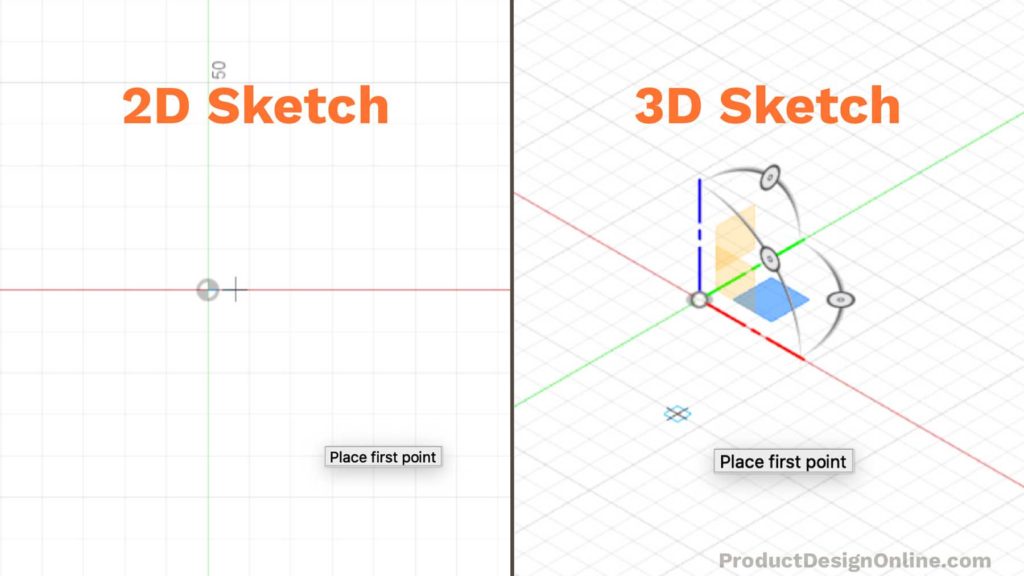
Information technology's important to note that 2D sketches also exists as an individual Sketch feature in the parametric timeline. You'll often accept several dissimilar sketch features that make upwardly a design.
Opposite, 3D sketches will be one unmarried sketch characteristic in the timeline.
Sketch dimensions and constraints can sometimes be harder to update and manage with 3D sketches – making the concept ofdesign intent harder.
Knowing when to use a 3D sketch instead of a 2D sketch can make all the deviation.
When to Use 3D Sketches
At that place'south no question that 3D sketches come with extra complexity. That may have you wondering, "When should I use a 3D Sketch?"
In brusk, use a 3D sketch to create a path for tubing, sweeps, lofts, or surface edges, when the design continues to multiple planes.
Use a 2D Sketch to create planar (flat) sketch geometry for common features like extrude and revolve.
3D Sketches are also good for:
- Routing
- Sweep Path
- Guide Curve
- Surface Extrudes
- Bend-Driven Patterns
- Split (Body) Lines
- Assembly skeletons
In summary, use a 3D sketch if it will salve time creating the model when compared to using traditional planes and second Sketches.
3D sketch instance objects:
- Bicycle handlebars
- Shower caddy
- Axe caput
- Furniture with continuous shapes
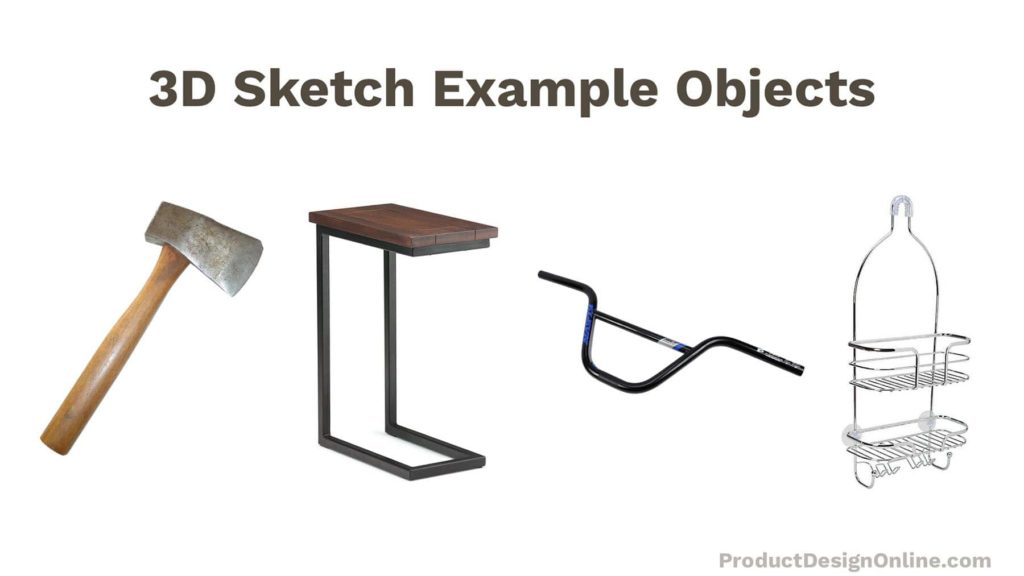
Create a 3D Sketch in Fusion 360
- Select theSolid tab in theDesign workspace. SelectCreate Sketch in the toolbar.
- Select the initial aeroplane or face to begin the sketch on.
- Check the3D Sketch box in theSketch Palette.
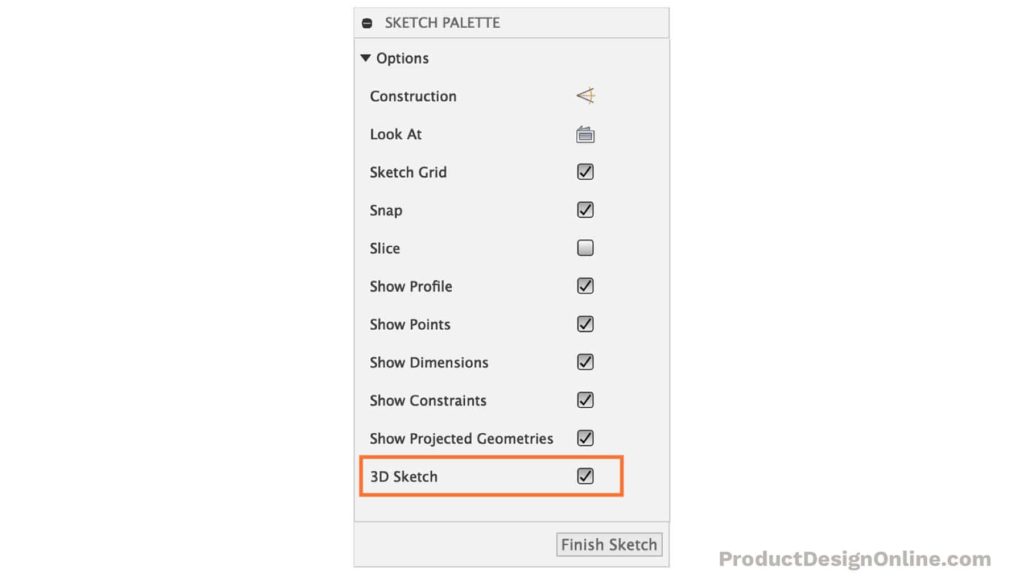
- Select ane of the sketch commands supported by3D Sketch. The 3D Sketch Manipulator will appear at the default location (0,0,0).
- Select a sketch plane or adjust the3D Sketch Manipulator. If desired, switch to a different sketch plane by selecting information technology (XY, YZ, or XZ) or rotate the sketch airplane by dragging any rotation handle.
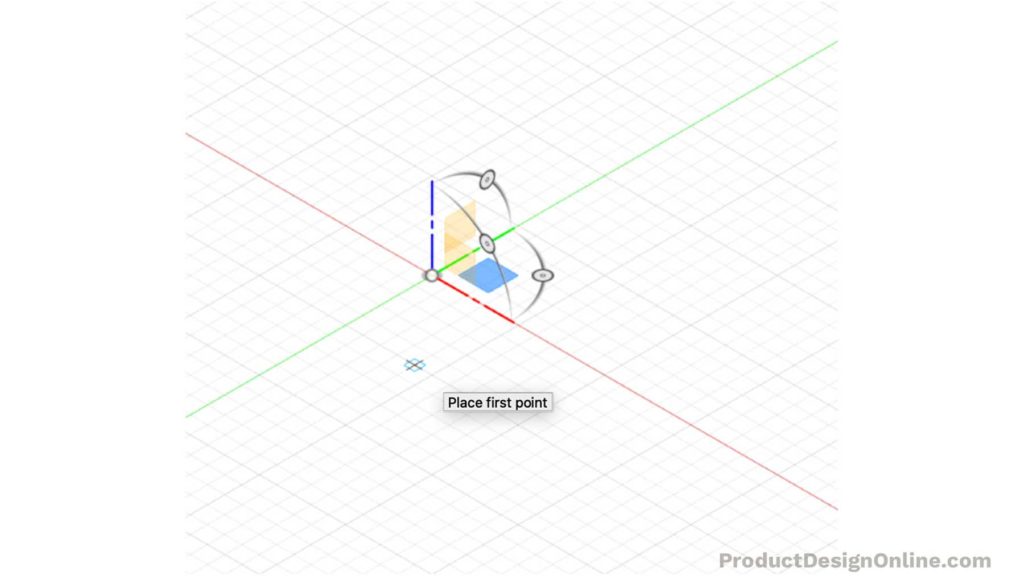
- Click anywhere on the agile sketch plane to create the first sketch signal. Hover along the axis until its extension line displays, then click to place the point to restrict the point along an axis.
- Continue to place sketch points as desired. The origin of the3D Sketch Manipulator volition shift to the concluding point you placed, as y'all place 3D sketch points.
- ClickFinish Sketch in the toolbar to stop the sketch.
Practice 3D Sketch – Sweep a Side Table
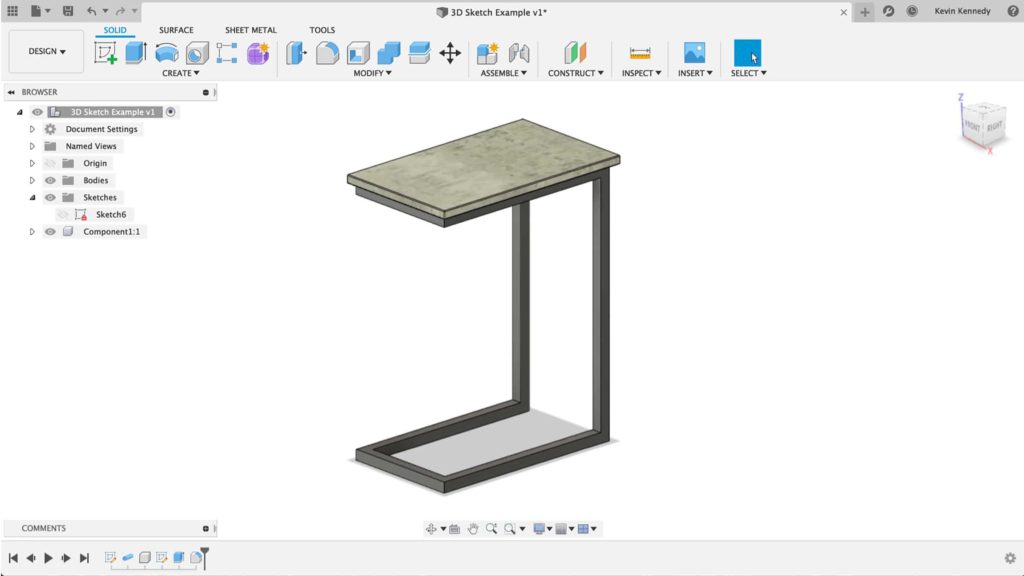
Time needed:xx minutes.
I happened to come across this "C Side Table" on Amazon and thought it was the perfect 3D Sketch beginner project.
This table design could theoretically use 2d Sketches. However, we can make the tabular arraymuch faster using 3D sketches.
- SelectCreate Sketch in the toolbar
Commencement the sketch by selecting the XY origin aeroplane. We'll click this plane to start by drawing the bottom of the tabular array as if it were sitting on the ground.
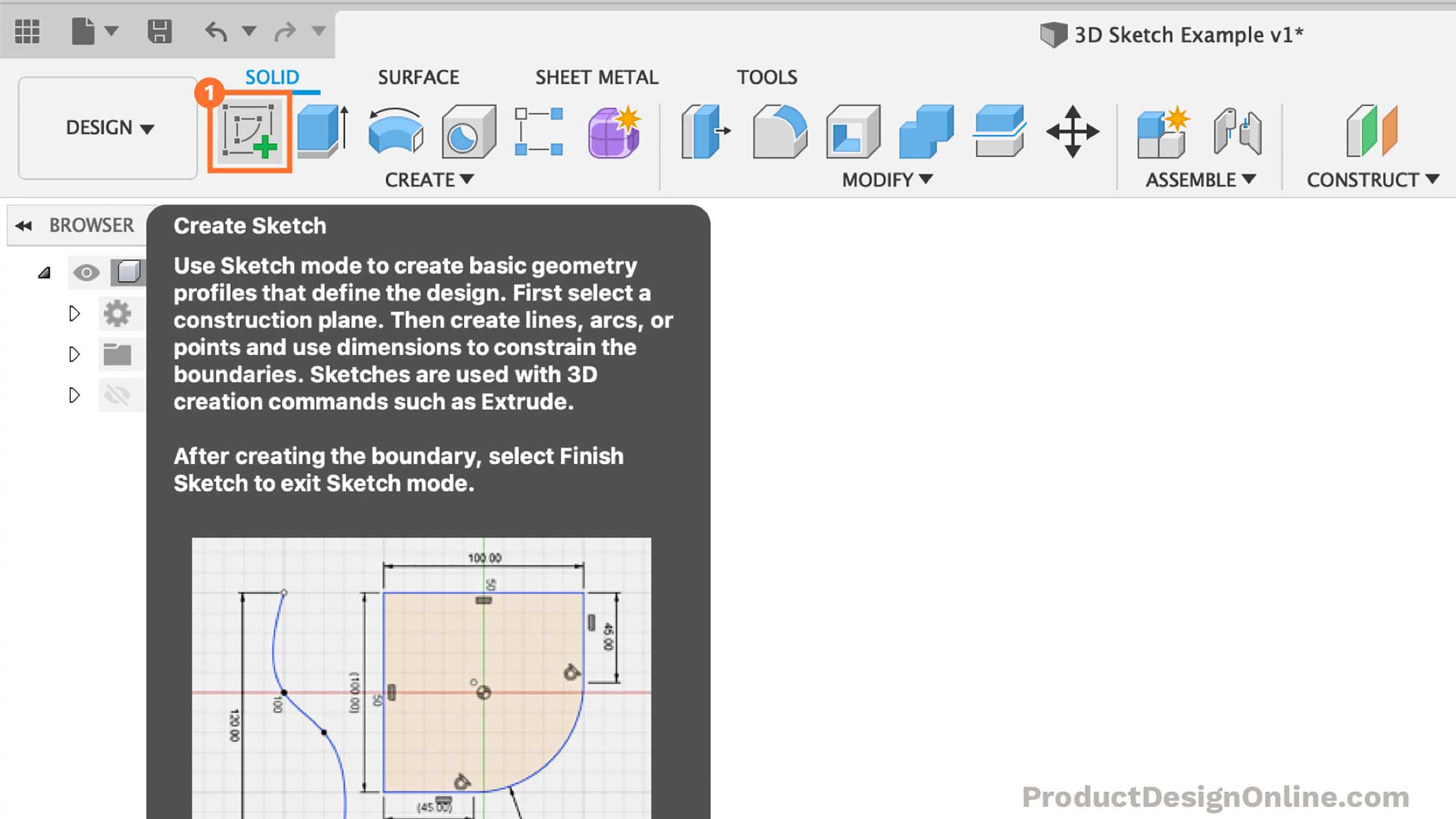
- Turn on 3D Sketch
Select the 3D Sketch checkbox in the Sketch Palette to turn it on.
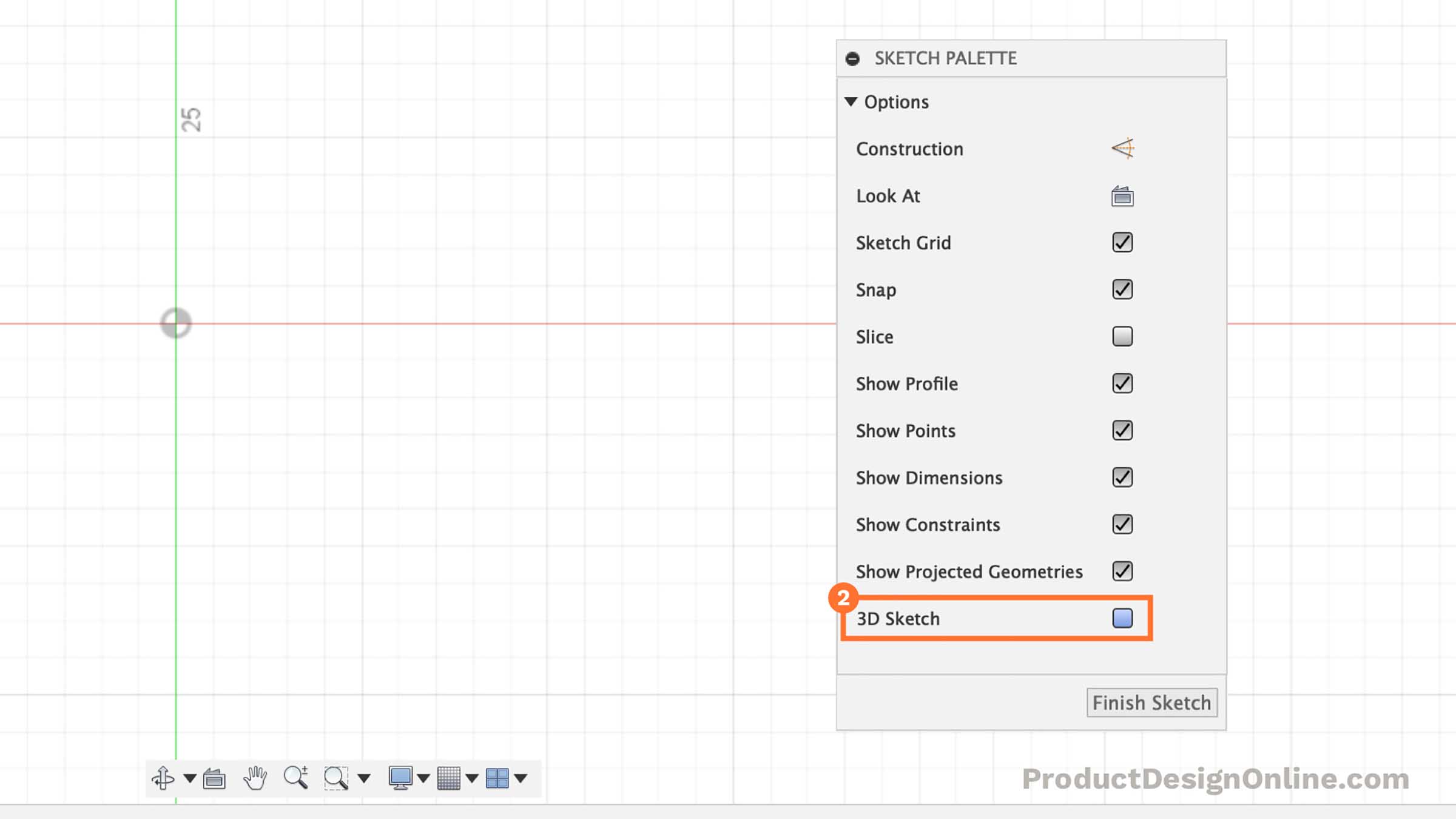
- Activate Line & Home View
Select the line feature in the toolbar or hit the keyboard shortcut "L." Select the "Home" position next to the ViewCube. This will assistance u.s.a. sketch in 3-dimensions.
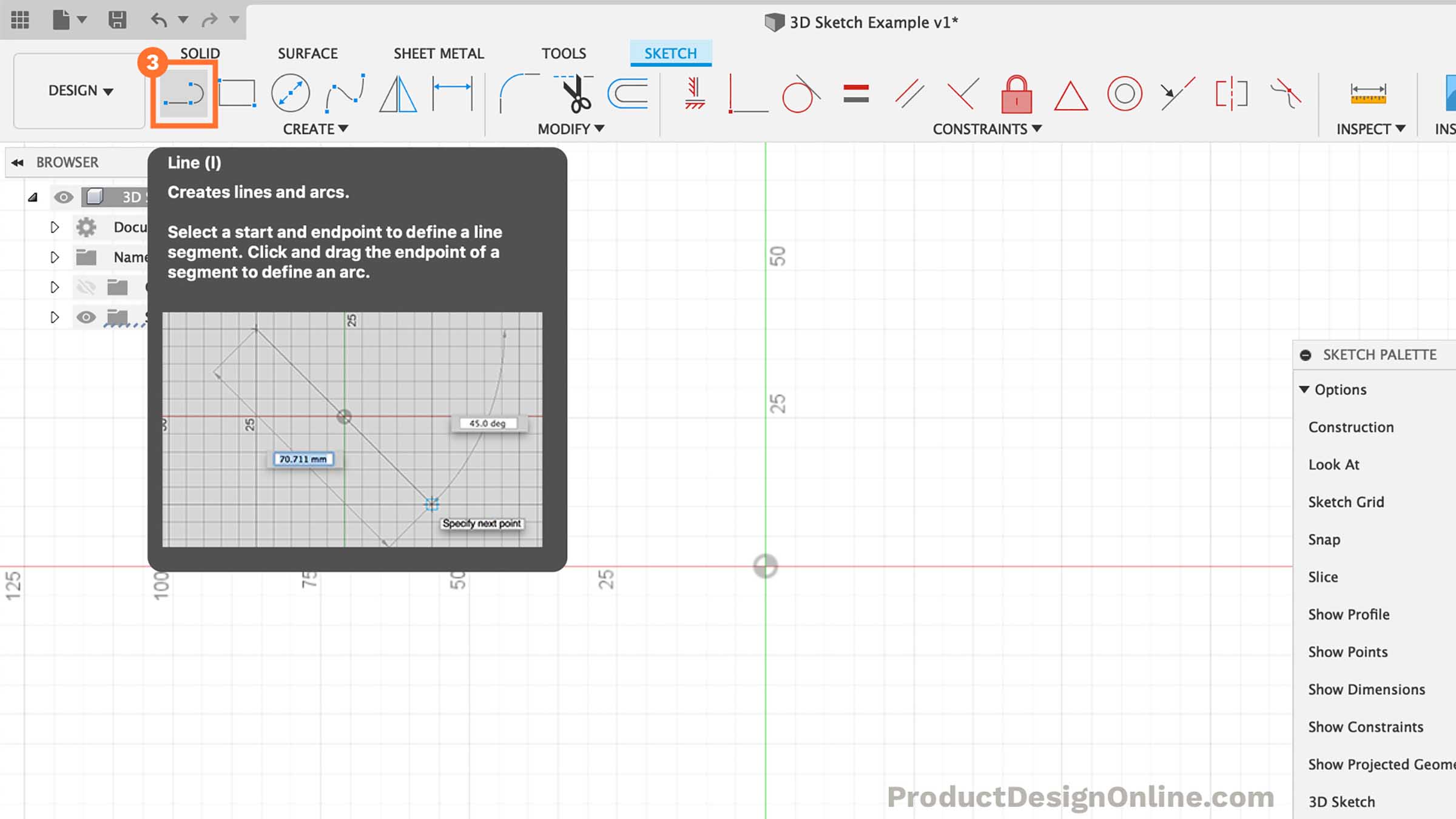
- Depict Beginning Line from Origin
At this signal, we can starting time the line by setting the beginning bespeak at the origin point.
Similar to a 2D sketch, we will elevate our mouse cursor along the light-green Y-axis. Blazon out 45cm for the length and and so click where the line snaps into the Y-centrality. Fusion 360 volition automatically add a "horizontal/vertical" constraint for us.
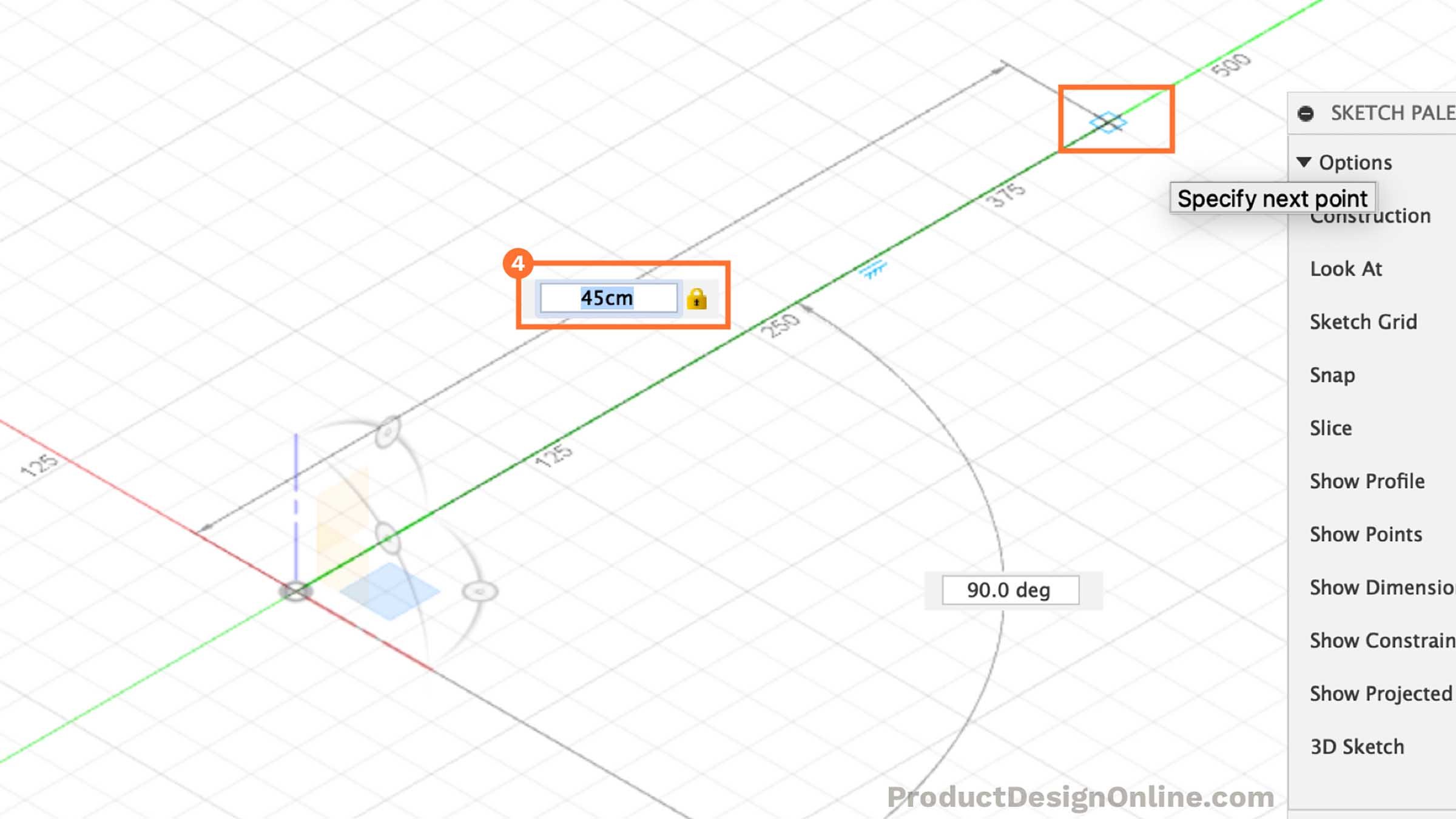
- Depict Line Direct Upwardly
We can kickoff to sketch the height of the table by moving our mouse cursor to the blue z-centrality. The cursor should snap to the z-axis when shut.
Blazon out 60cm for the height. Carefully select the blue z-axis to set the line, making sure it automatically add a vertical constraint.
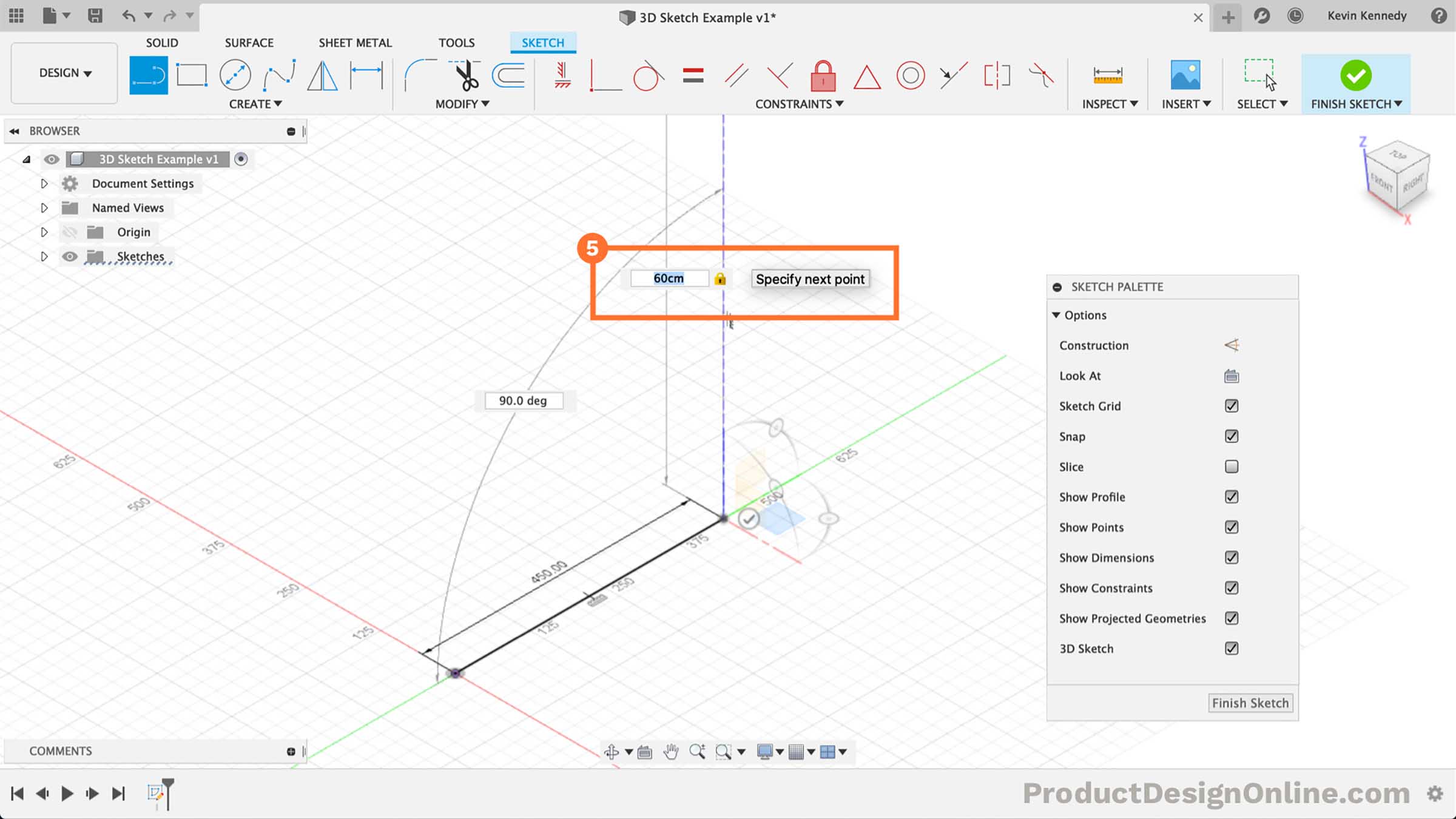
- Heading Dorsum Toward Middle
For the third line, we'll want to head dorsum toward the centre, while following the green y-axis. If you oasis't already noticed, see that the origin planes motion to the end of our line while in 3D sketch fashion.
This is where things start to get tricky with 3D Sketches. We don't want to overuse sketch dimensions. Instead of typing out a dimension, click to place the line forth the y-centrality.
Shift-click the endpoints of the line we just placed and the origin point or the original starting point of our first line. Select the "horizontal/vertical" constraint in the toolbar. This volition ensure they stay the same length while making it easy for us to update but i dimension.
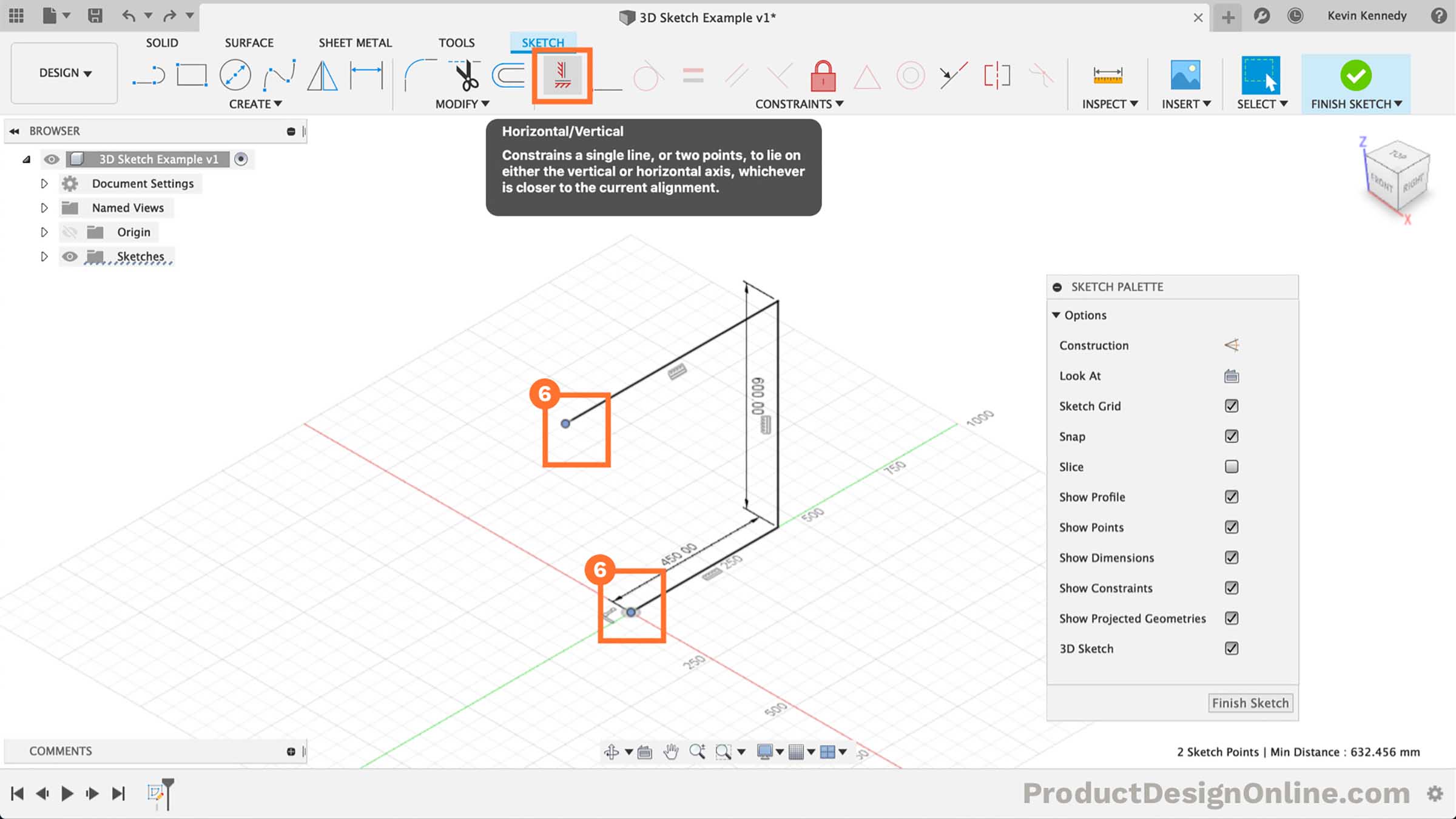
- Reactivate Line Control
Select the line feature in the toolbar. Select the endpoint of the line we just placed.
The 3D sketch planes and manipulators volition reappear in one case y'all select the endpoint.
For this line, we'll type out25cm for the width. Make sure to snap the line in identify along the cherry-red x-axis.

- Heading Back to the Right
Nosotros'll now desire to create a line heading back to the correct.
Since we've already defined our length, nosotros'll want to utilize sketch constraints instead of sketch dimensions for this one. Click along the green y-axis where the line snaps in at the same length of the opposite line.
Hitting the "Escape" fundamental on your keyboard. Shift-click the endpoint of this line and the opposite line. Select the "Horizontal/Vertical" Constraint in the toolbar. This will force the line to stay the same length.
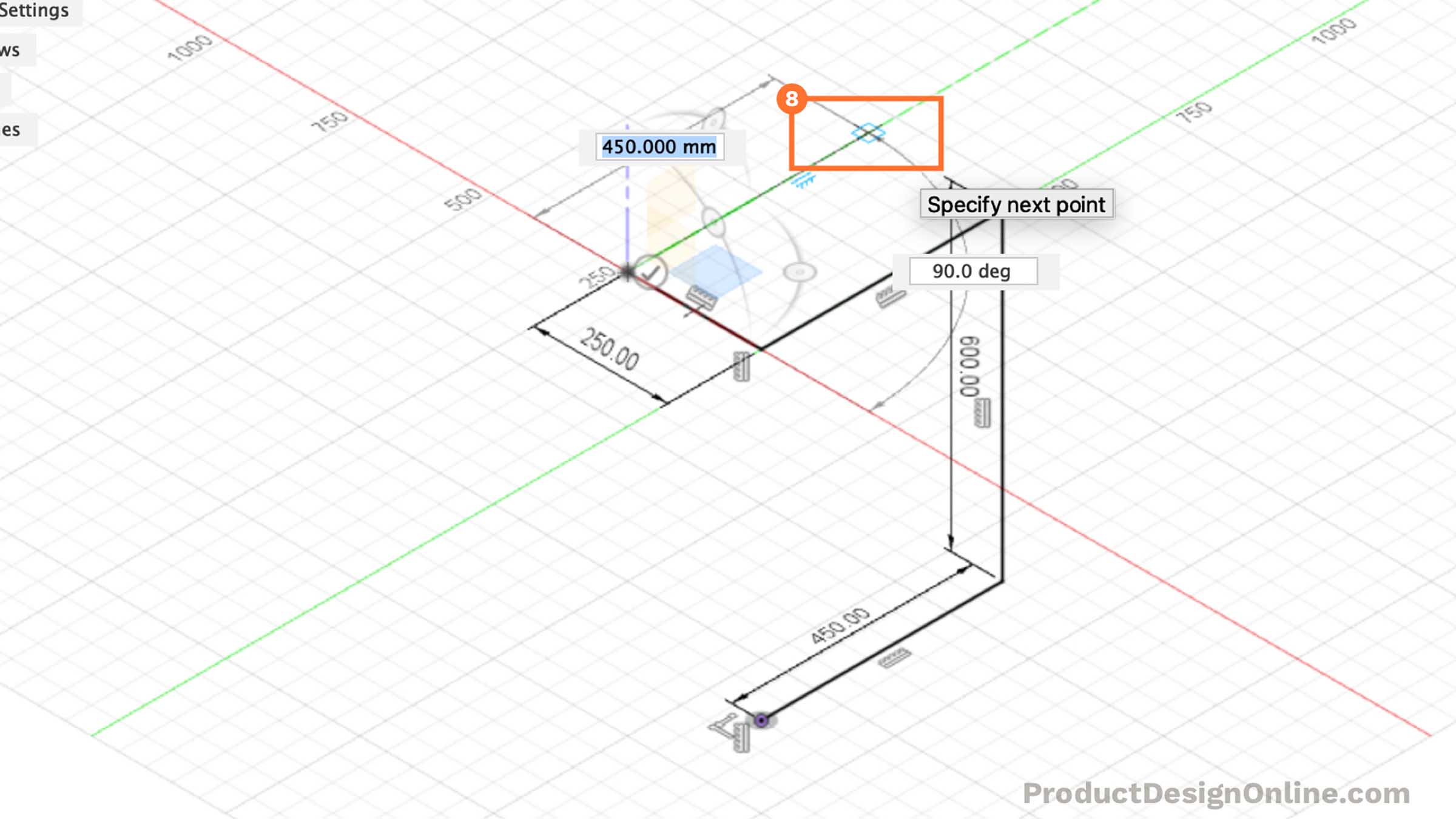
- Heading Directly Down
Reactivate the line command in the toolbar. Select the endpoint of the last line we created.
Heading straight down, click to place the line along the blue z-axis where it snaps equidistant to the contrary line. The line should be 60cm.
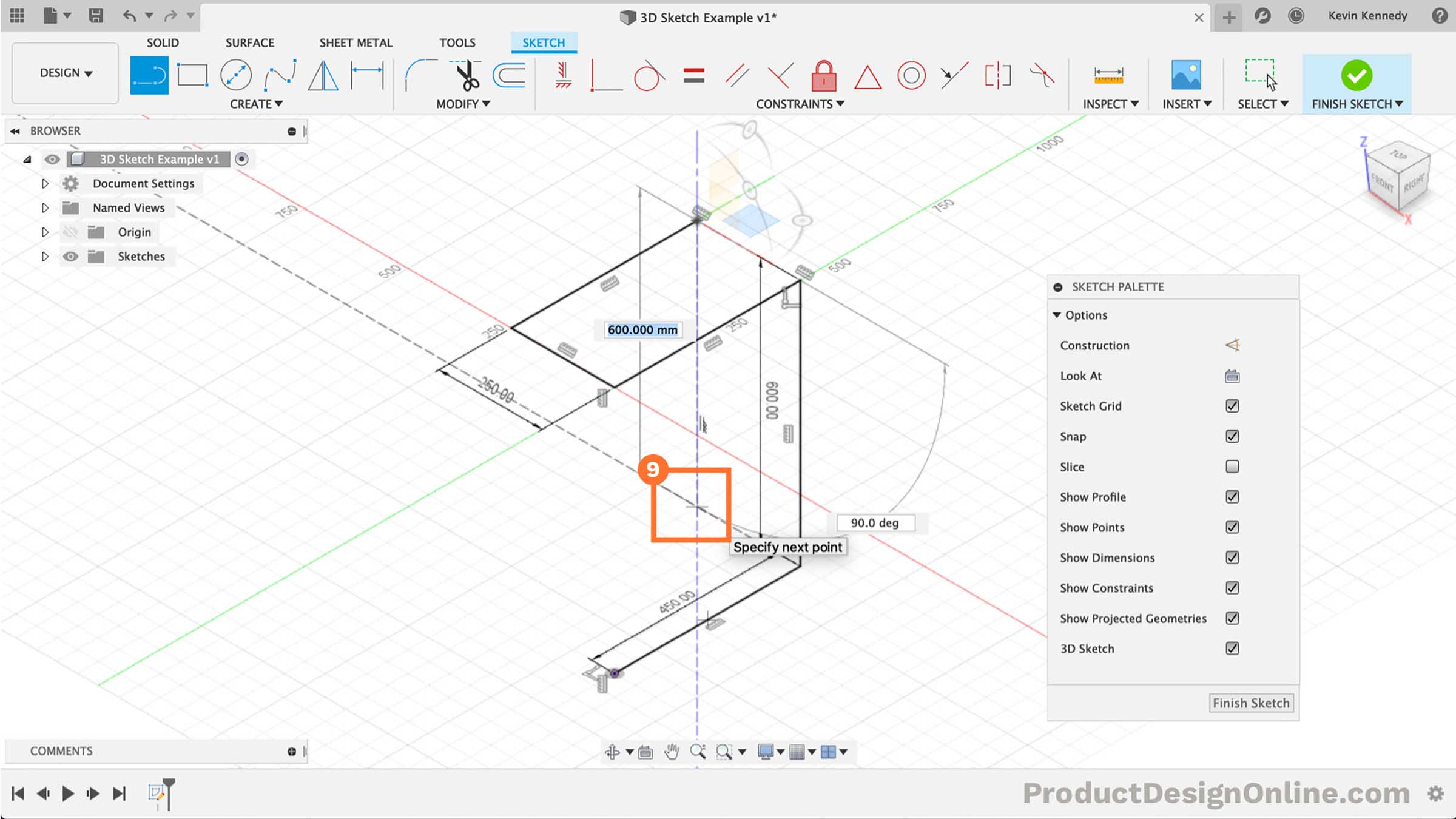
- Finishing off The Lines
Permit'south end off the lines by mimicking the "C" shape on the opposite side.
Place the beginning endpoint at the red y-axis. Create the second line by clicking the origin point.
Hit the "escape" key to articulate the line command.
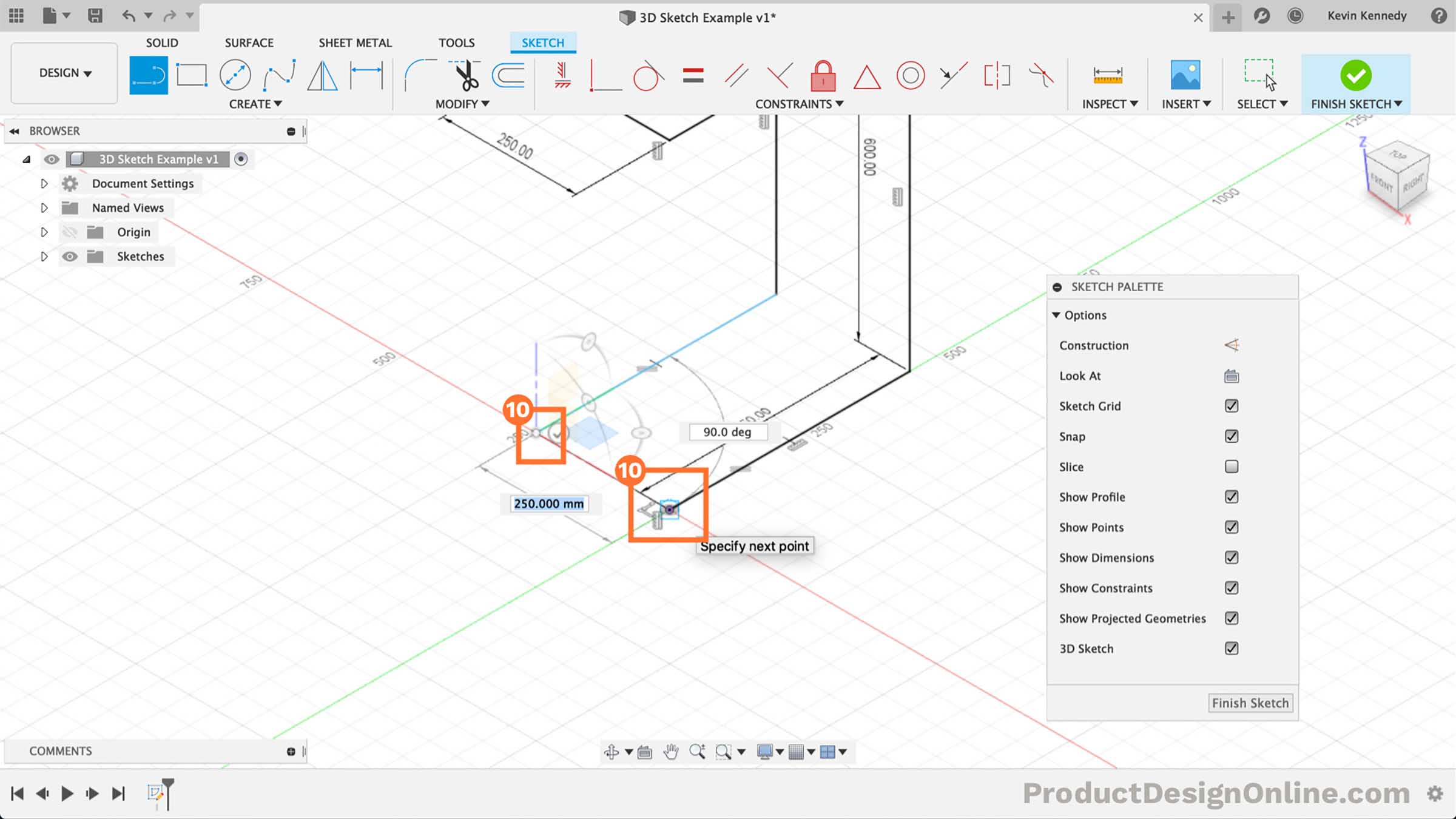
- Adding the Final Constraints
To ensure our sketch is fully-constrained, we'll need to add the final constraints.
It appears the last line created does not have a constraint forcing it to remain in i management. Simply select the line and so select the "Horizontal/Vertical" constraint in the toolbar.
Our sketch is at present fully-constrained. We tin can double-check this by looking for the ruby lock icon next to the Sketch name in the Browser.

- Turning the Sketch into Pipes
Our sketch is at present consummate. We're ready to apply the Pipe command to plow the sketch into furniture.
Select theSolid tab in the toolbar. SelectPiping from theCreate dropdown. Select the 3D sketch geometry.
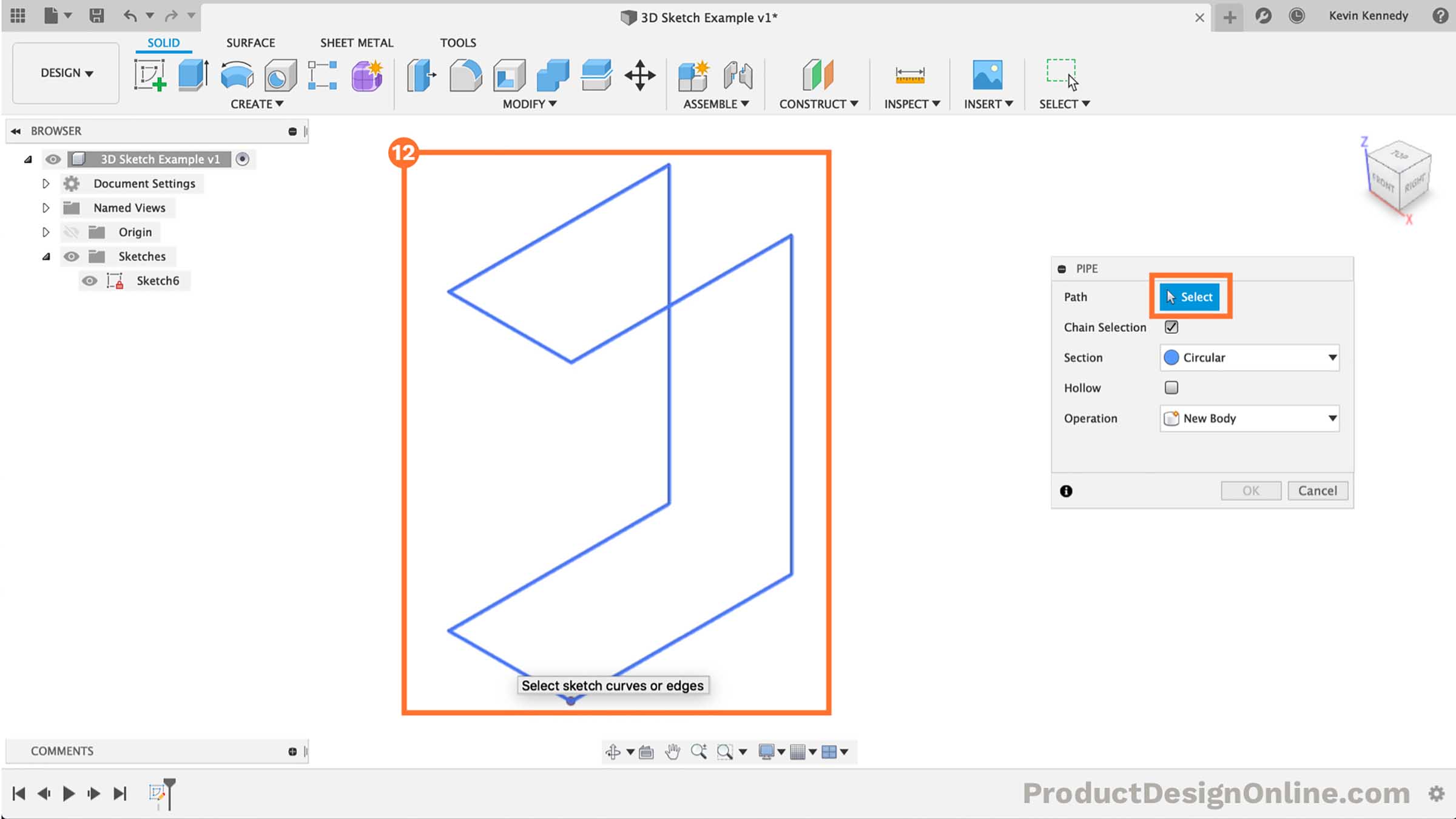
- Adjusting the Pipe Features
We'll want to set up theSection type toSquare. We can too change the thickness of the pipe by irresolute the section size.
I've entered2.5cm for thesection size.
Select the "Hollow" checkbox, which displays thesection thickness. For the department thickness type out2mm.

- Congrats and Next Steps
You've now completed the 3D Sketch! Finish off the model by calculation boards to the top – or whatever surface you desire!
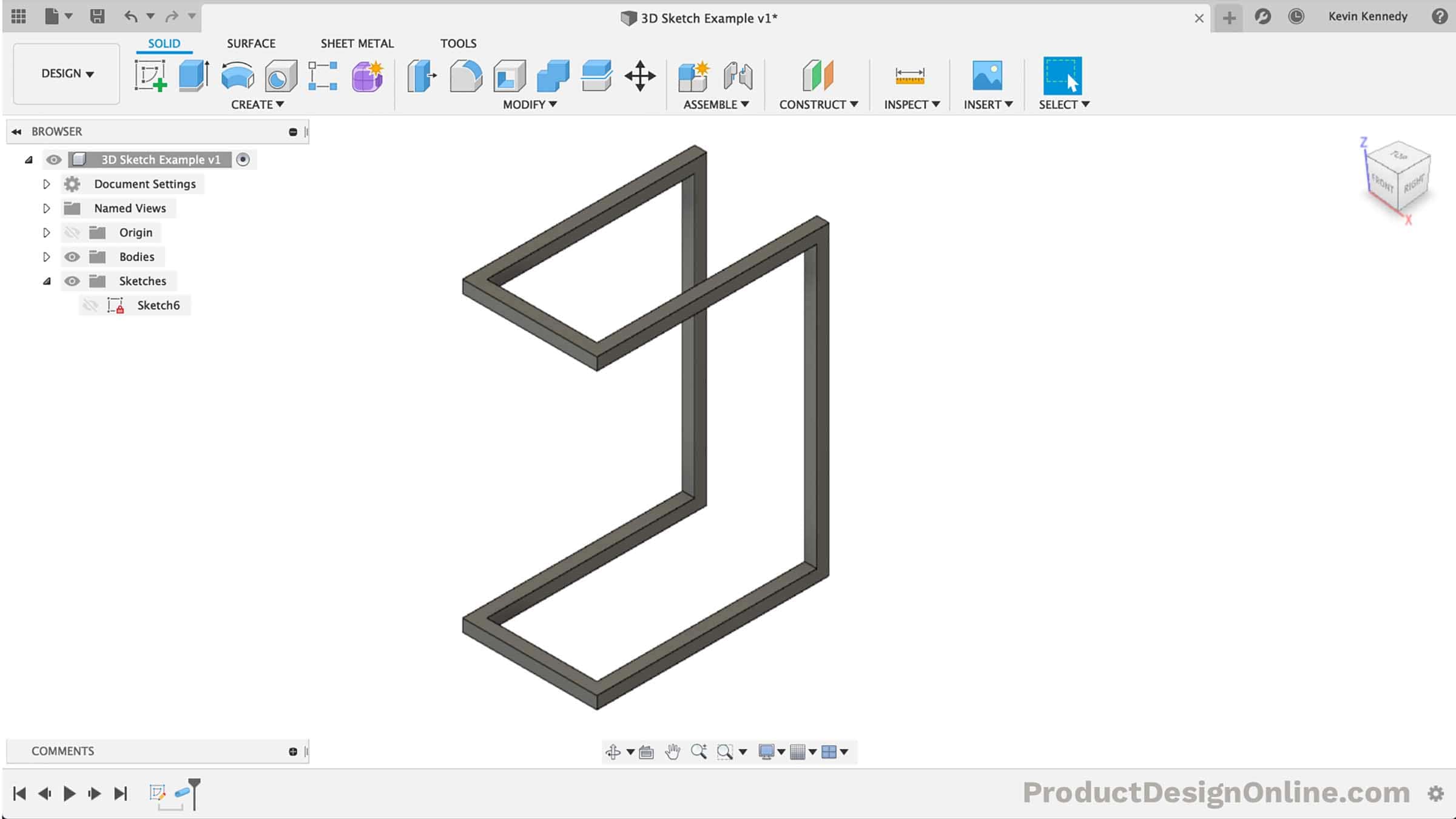
Source: https://productdesignonline.com/fusion-360-tutorials/introduction-to-3d-sketching-in-fusion-360/
0 Response to "easy plane to 3d draw"
Post a Comment